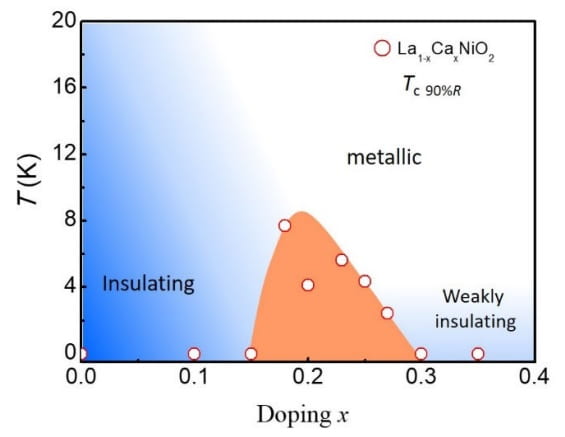[Science Advances 8, eabl9927 (2022)] The origin of high-Tc superconductivity remains an enigma even though tremendous research effort and progress have been made on cuprate and iron pnictide superconductors. Aiming to mimic the cuprate-like electronic configuration of transition metal, superconductivity has been recently found in nickelates. This discovery hallmarks a new era in the search and understanding of the high-Tc superconductivity. However, unlike the cuprate and iron pnictide, in which the superconductivity was initially found in a compound containing La, the superconductivity in the nickelate has only been observed in Nd- and Pr-based compounds. This raises a central question of whether the f electron of the rare-earth element is critical for superconductivity in the nickelates. Here, we report the observation of superconductivity in infinite-layer Ca-doped LaNiO2 (La1-xCaxNiO2) thin films and construct their phase diagram. Unlike the metal-insulator transition in Nd- and Pr-based nickelates, the undoped and underdoped La1-xCaxNiO2 thin films are entirely insulating from 300 down to 2 K. A superconducting dome is observed from 0.15<x<0.3 with weakly insulating behavior at the overdoped regime. Moreover, the sign of the Hall coefficient RH changes at low temperature for samples with a higher doping level. However, distinct from the Nd- and Pr-based nickelates, the RH-sign-change temperature remains around 35 K as the doping increases, suggesting a different multiband structure in the La1-xCaxNiO2. These results also emphasize the significant role of lattice correlation on the multiband structures of the infinite-layer nickelates.

